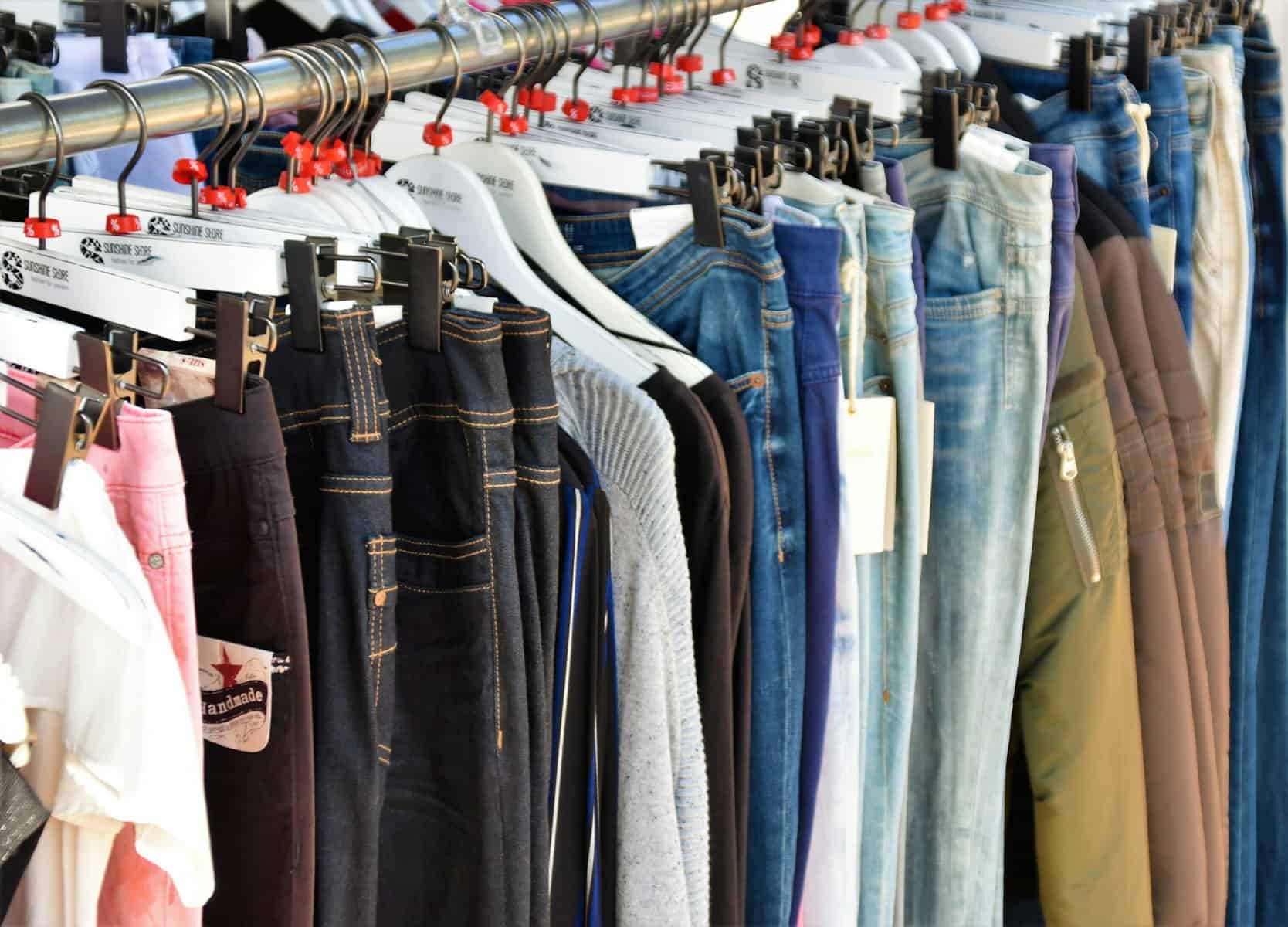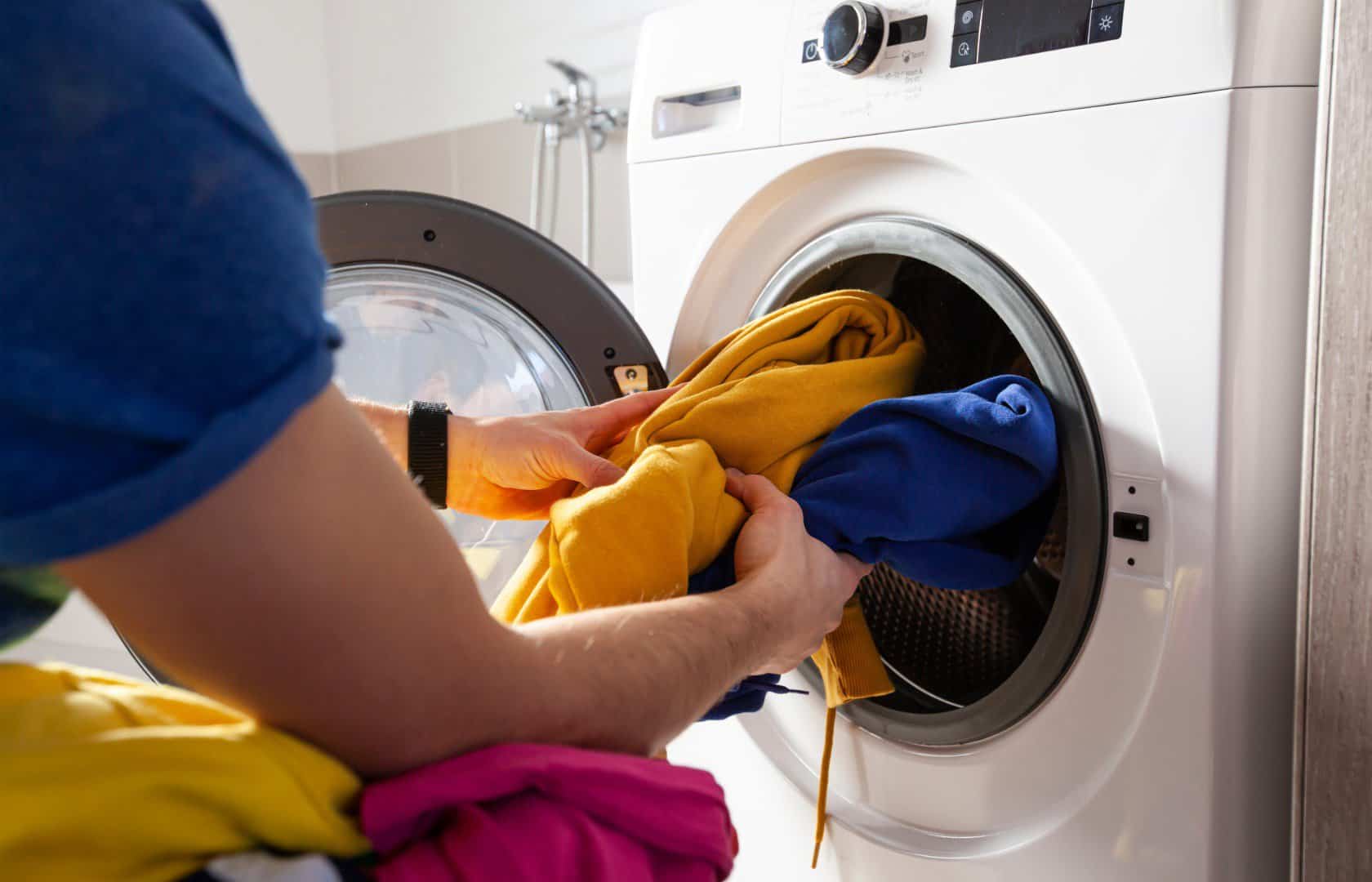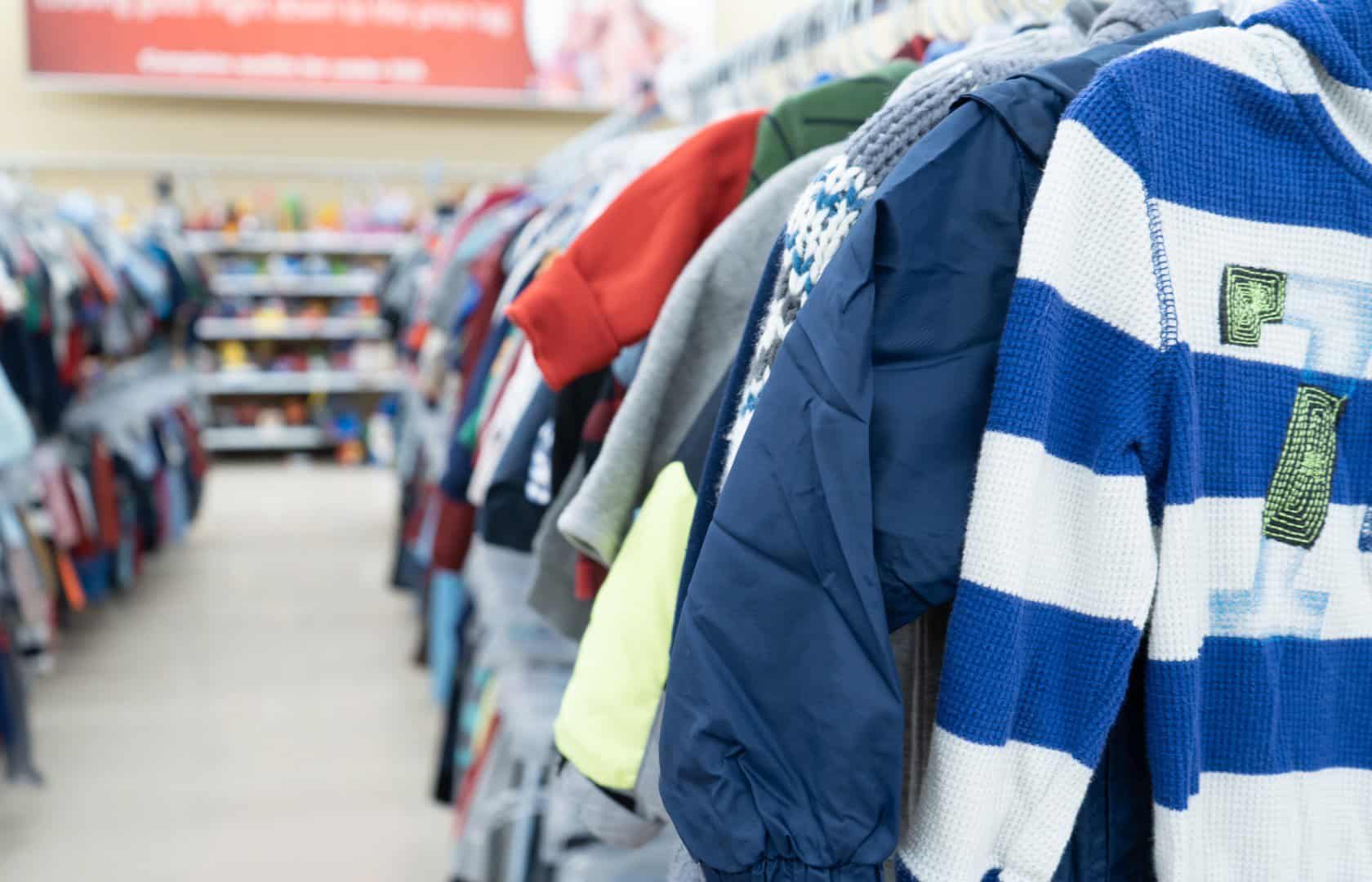Thrift stores are a great place to shop for vintage clothes and unique things to use in the house without breaking the bank.
It has been a trend for many years and doesn’t look like it will stop soon. But the downside of thrift shopping is the thrift store’s funky smell.
The smell of thrifted clothes or household items can be off-putting, but don’t let that discourage you from buying them. The good news is there are ways to deal with thrift store smells and make your items smell fresh again.
Remember that the thrift store smell doesn’t have to discourage you from buying thrift items. With some effort and several items, you can remove the bad odor and enjoy your clothing, furniture, and other vintage finds.
Keep reading to learn about the hacks you can use to make your thrifted items smell fresh and clean.

Key Takeaway
- Thrift store smells come from previous wearers, storage conditions, environmental contaminants, and laundry products. Don’t let the smell deter you from great finds.
- Prepare items by airing and sunlight before washing. Then deep clean using baking soda, vinegar, vodka, or activated charcoal to eliminate odors.
- Clean different fabrics appropriately based on delicate or sturdy properties. Upholstered furniture benefits from vacuuming, shampooing, and using targeted solutions.
- Properly store freshly cleaned items in sealed bags in dry, well-ventilated spaces to prevent the reintroduction of mildew, bacteria, and funky thrift store smells.
Common Causes of Odors in Secondhand Items
There are many reasons why secondhand clothes smell. These include:
- Previous wearer odors: Sometimes, lingering body odors or heavily scented perfumes from previous wearers can seep into the fabric and persist even after washing.
- Storage conditions: Items stored in humid, poorly ventilated environments are prone to developing mold, which imparts a musty odor to the fabric over time.
- Environmental contaminants: Exposure to cigarette smoke, car exhaust fumes, and other residues can be challenging to remove from fabric, despite multiple washes. However, the techniques outlined below can help eliminate these odors effectively.
- Residual laundry products: Dry cleaning chemicals and lingering perfumes from laundry products may cling to the fabric, resulting in unpleasant odors even after repeated washing. Additionally, inadequate cleaning and drying processes can contribute to the accumulation of unwanted smells.
Best Practices for Eliminating Thrift Store Smells
Preparation
Airing is the first thing you need to do to help remove the smell from your vintage finds. If you leave the items packed, they will continue to accumulate a funky smell, especially if stored in a non-ventilated area.
So, unpack the items and take them out or in a room with lots of air. Let them release the stench first before washing them.
It’s best to place the items under direct sunlight. UV rays of the sun can help break down some molecules and release some odor from the clothing.
Deep Cleaning
Deep cleaning your secondhand clothes using a non-toxic and odor-removing product can lift up the smell. But for the first wash, it is always recommended that you hand wash them before dipping them in the washing machine to remove the smell.
Note that many thrift clothes are designed with fragile material that can be damaged with machine washing. Nevertheless, here are the steps to follow when washing your second hand garments with a washing machine:
Step 1: Add a cup of baking soda to your washing machine along with your regular detergent.
Step 2: Wash the clothes using cold water setting.
Step 3: Rinse thoroughly to get rid of excess detergent.
Using baking soda is a great way of cleaning a smelly item. Since it is a natural deodorizer, it will help neutralize bad smells. It also softens crunchy thrift store clothes. It’s best not to use fabric softeners and dryer sheets on vintage fabrics, as they can damage them.

If you are removing smell from furniture, the process is the same with clothing, except that you cannot insert it into a washing machine. The best method to use is vacuuming and spot cleaning using a targeting cleaning solution. Since the solution penetrates deep, it will remove the odor from the inside, unlike regular wiping, which deals with the stench on top.
Here are the steps to follow when cleaning furniture.
Step 1: Give the furniture a good deep vacuum.
Step 2: Spot-clean the stains using a solution of a cup of white vinegar and a cup of water.
Step 3: Allow the item to dry.
Alternatively, you can sunbathe the furniture. Find a well-ventilated place in your home and put the item under direct sunlight. That will help remove any foul smell that may be lingering.
The other method is to invest in a homemade deodorizer, which you can use to spray the furniture. But with this, you have to spray first, sunbathe, and then spray after for maximum results.
If the clothing or fabric is delicate, dry cleaning may be the best way of removing the old smell.
The chemical used penetrates deep and dissolves extra stubborn odors that home washing machines cannot get rid of. When you take the item to the dry cleaner, remember to ask him to use special chemicals that have been specifically made to remove smell from clothes.
Extra Deodorizing
Using Distilled Vinegar
Vinegar is used to clean and disinfect items in the house. You can use it to remove odor on vintage clothing in two ways:
- Letting it stay overnight: Pour some vinegar into a small bowl. Place it in a small room or in the closet where your clothing items are, and let it sit overnight. It works best when you store it in a small, airtight container where it doesn’t touch your vintage items. Let the vinegar sit in there for one or two nights. It will absorb the foul odors. Once you open the vinegar, the smell may fill the room. In that case, open the windows for fresh air.
- Spray method: This is the best option for dealing with stubborn bad smells. Put the vinegar in a spray bottle and spray it directly on the garment. As it evaporates, it takes the odor with it. If your vintage garments smell vinegar afterward, open your windows to let the garment air it out.
Using Vodka
Vodka is another excellent deodorizer. Just spray it on your vintage clothing and allow it to dry. The vodka will take the bad smell with it when it evaporates.
Using Activated Charcoal
Put a small amount of activated charcoal in a plastic bag, seal it, and place it inside closet storage containers, small pouches in drawers, or loose in garments. It will absorb the odor molecules, causing the smell, leaving your items fresh and clean.
Tip: You can also stuff second-hand clothing items with unused dryer sheets to impart nice scents into the materials and mask the musty smell. However, don’t do this on fragile fabrics.
Maintenance
After removing the smell, you need to follow proper maintenance measures to prevent the clothes from smelling again. Here are some things to do:
Store the clean cloth properly. Make sure that the room is well-ventilated to let fresh air in and prevent the growth of mold and mildew. Proper ventilation also prevents moisture buildup, which can cause future odors.
Wash your clothes periodically, and remember to apply cleaning solutions. That way, you will keep them fresh in between wears, allowing them to feel just-cleaned for a long time.
Tips by Item Type
Clothing
Determine the type of fabric
Some clothes are made of delicate fabrics that can be easily damaged if cleaned the wrong way. Before you practice any cleaning method, read the label carefully to understand the washing and care requirements of the garment.
Start with fabric that absorbs and retains water
The first items you should wash are those that are easy to acquire smells and are hard to let out. These include wool garments and items made with polyester and linen materials. With these items, the detergents must penetrate deeper to remove the stench, so you should wash them in the first batch.
Use laundry products to eliminate smell
Take advantage of odor-removing enhancers such as scent booster beads and oxygenated whitening agents. These help lift and remove stains and break down molecules that cause the funky smell on your clothes.
Furniture

Vacuum thoroughly
It’s normal for dust, hair, dirt, and skin flakes to accumulate on upholstered items. If these particles are not removed, they can lead to a bad stench over time. Vacuuming is the best way to get rid of the smell of thrifted furniture. Use your cleaner inside the seams on coaches, chairs, and crevices.
Shampoo foam and cushions with targeted solutions
These solutions pick oil, sweat, debris, and soil that has penetrated deep within the fibers, leaving your fabrics fresh and clean.
Treat unseen spots
Places with less foot traffic can be sources of bad stench. Check the inside of your drawers, cabinets, and closed storage spaces from tight to tight, as they can be hidden spots for mold and bacteria. Additionally, allow the room as much as possible.
Leather Goods
Use emollient cream rehydrates on aged dried leather products. These will nourish the items, loosening and lifting up from pores and cracks. Remember to massage gently after you have applied.
Stuff shoes, bags, and jackets with used coffee grounds- these absorb stubborn smells that are on your leather item and impart a fresh aroma.
Additional Tricky Items
If you have books you are not using, tuck them away with several bunches of unused kitty litter between piles. That way, they will absorb musty air and keep mildew from growing by wicking moisture away.
Consider placing stinky shows directly under UV light bulbs for some hours. The rays from the bulb kill bacteria and break down molecules that cause foot and shoe odors with time.
Storing Freshly Cleaned Thrift Finds
Place your clothes in plastic bags and seal them before storing them. That way, it will create a barrier that prevents ambient odors from surrounding environments from being reintroduced into the clothes. Plus, it will give the fabrics ample time to finish off-gassing residual smells.
You should also give the thrifted clothes enough time to air out, approximately 12-24 hours before storing them or shelving them. That helps to get rid of trapped gasses and moisture that could react with the clothes and cause reemergence of that musty smell on thrift store clothing.
Conclusion

As we have seen, various ways of removing bad smells from vintage clothing and other thrift items exist. These techniques range from commercial-grade cleaning solutions to special laundering.
What’s important to remember is to store your items well once you have removed the odor to keep them fresh and clean. This approach applies to your furniture, ensuring your comfortable sectional couch stays in top condition with proper care and maintenance.
Use breathable containers and store them in a dry environment. That will prevent the re-introduction of mold, mildew, and bacteria that cause secondhand goods to smell.
Since you can eliminate the off-putting smell, you can continue enjoying thrift shopping and support sustainability by reusing.
